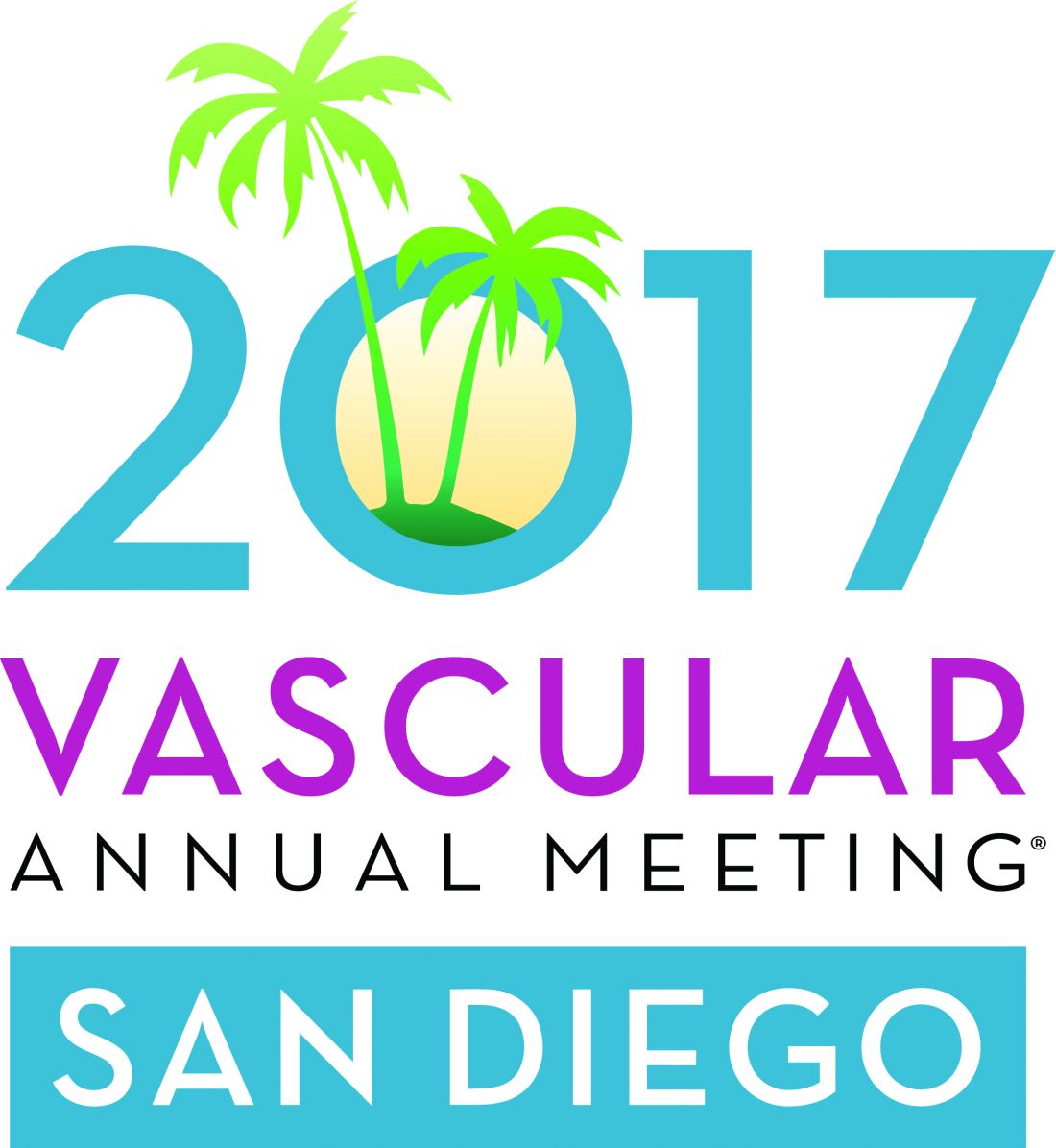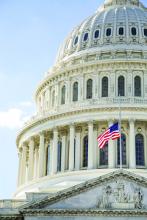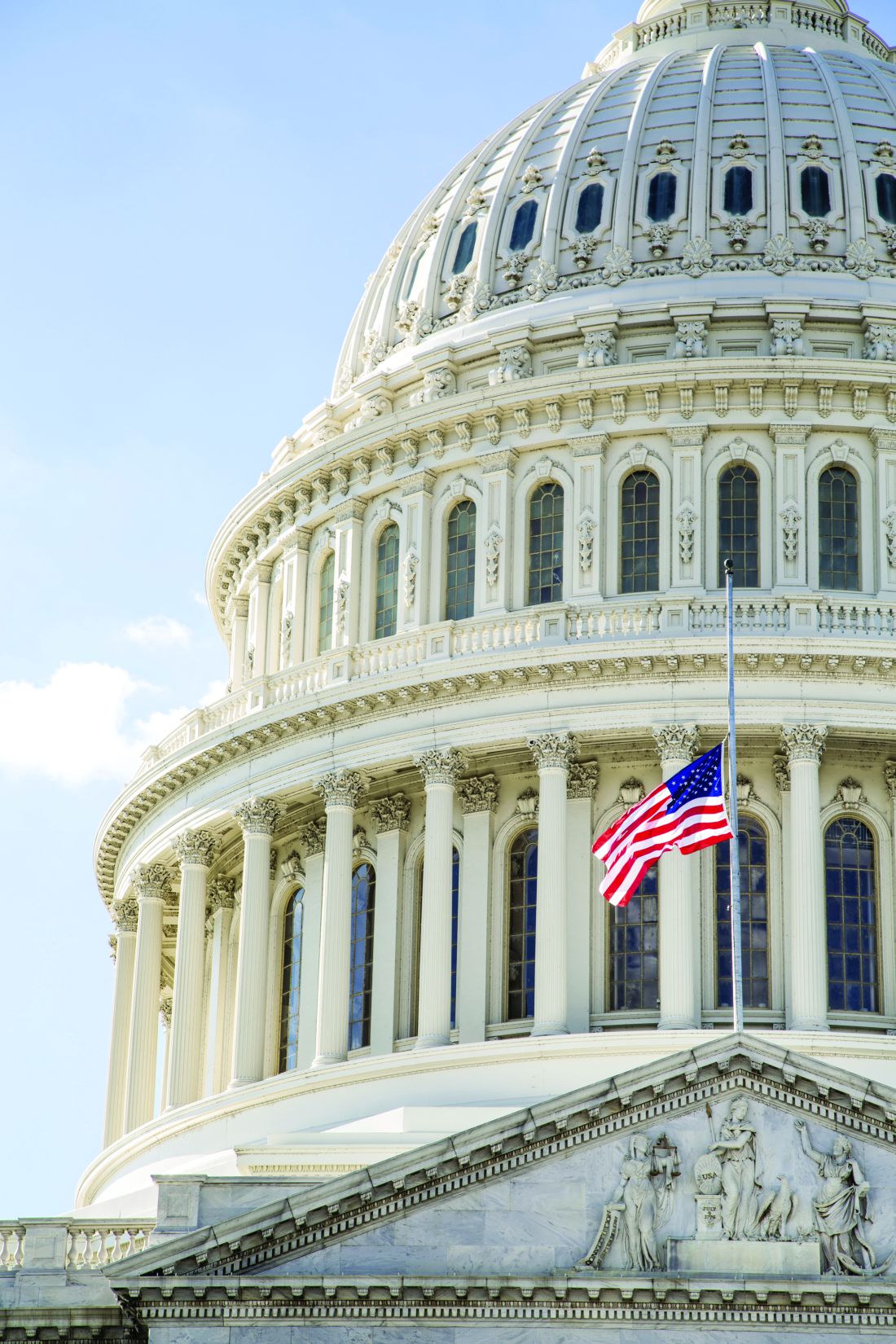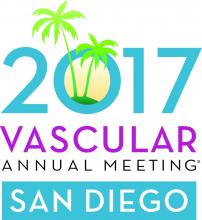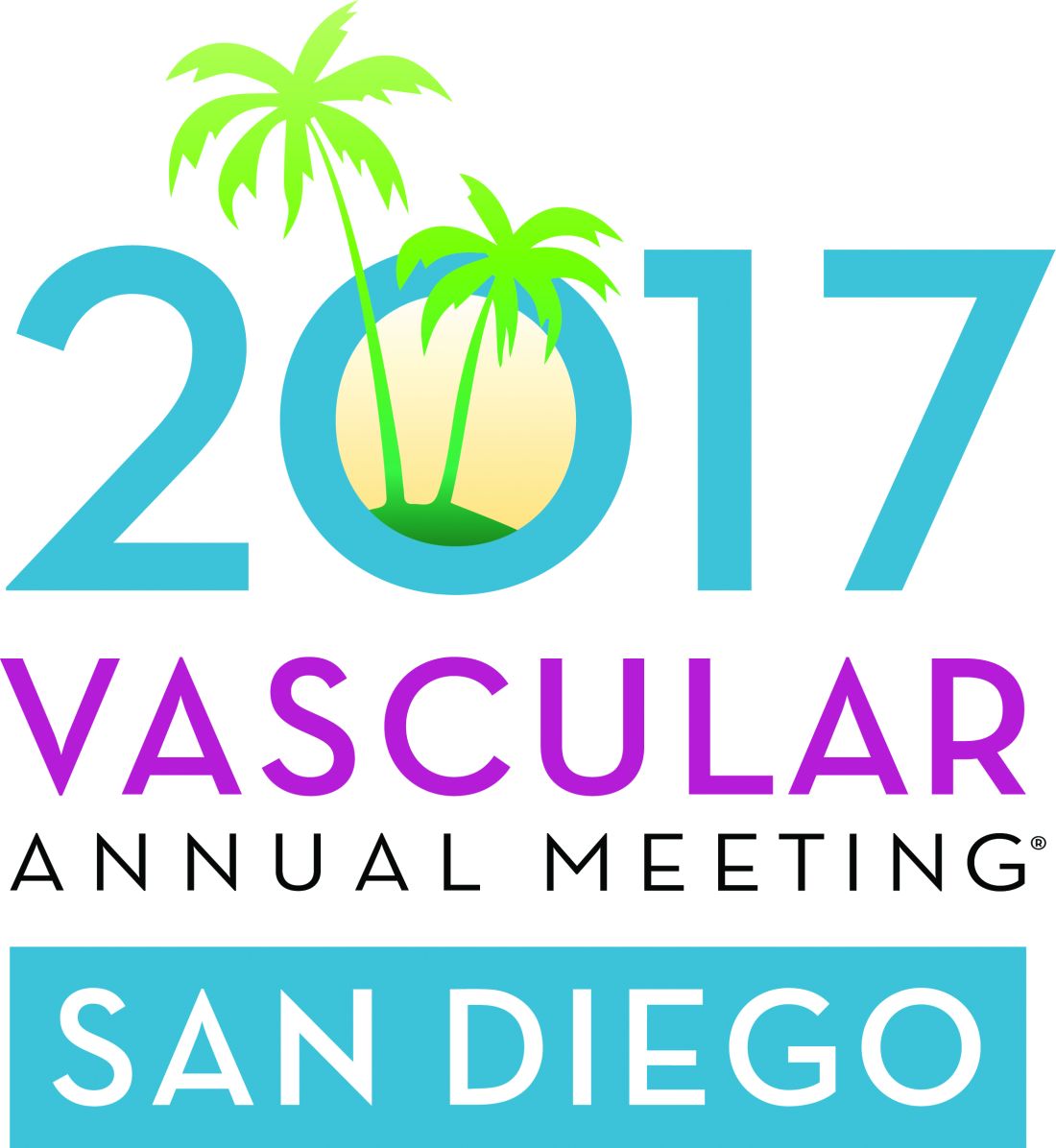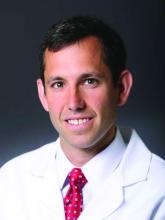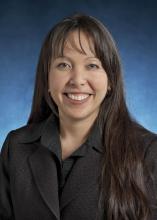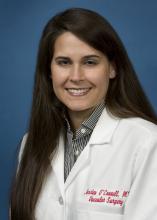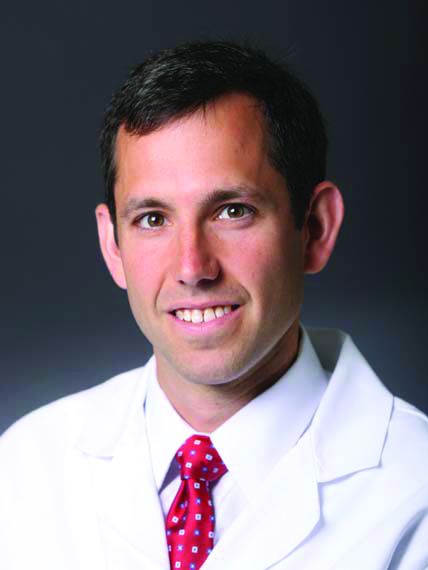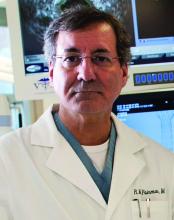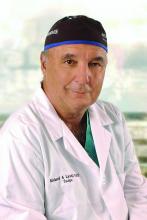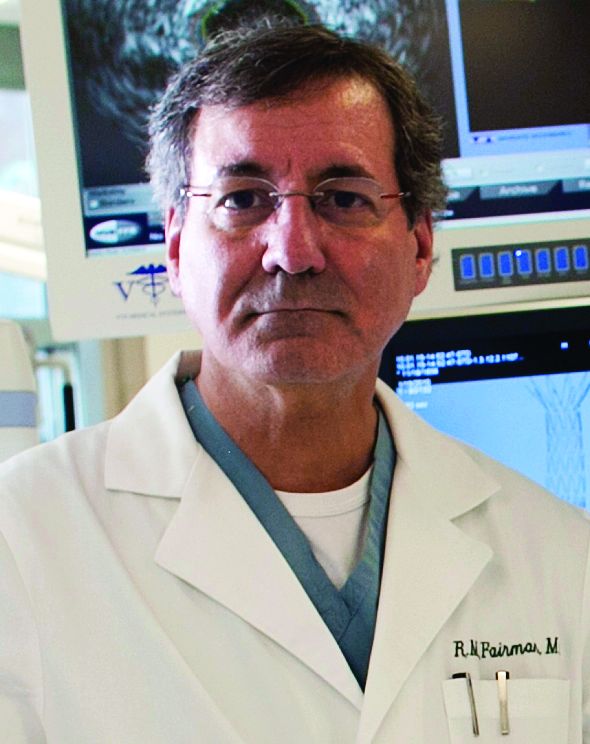User login
VAM Registration, Housing Now Open
Registration and housing for the 2017 Vascular Annual Meeting is now open. VAM will be held May 31-June 3 in San Diego, with plenaries and exhibits open June 1-3. Register here and make housing reservations here.
Registration and housing for the 2017 Vascular Annual Meeting is now open. VAM will be held May 31-June 3 in San Diego, with plenaries and exhibits open June 1-3. Register here and make housing reservations here.
Registration and housing for the 2017 Vascular Annual Meeting is now open. VAM will be held May 31-June 3 in San Diego, with plenaries and exhibits open June 1-3. Register here and make housing reservations here.
SVS Launches Expanded Member Benefits Portfolio
The Society for Vascular Surgery is proud to announce the launch of its very own member affinity program, offering members access to best-in-class products and services coupled with special member discounts.
The portfolio includes a number of insurance, financial and private-practice related products that will assist members in their day-to-day lives. The result: a selection of financial and practice solutions to protect and benefit your families, incomes, practices, offices and staff – even your own slice of cyberspace.
For more information, visit vsweb.org/AffinityProgram or email [email protected].
The Society for Vascular Surgery is proud to announce the launch of its very own member affinity program, offering members access to best-in-class products and services coupled with special member discounts.
The portfolio includes a number of insurance, financial and private-practice related products that will assist members in their day-to-day lives. The result: a selection of financial and practice solutions to protect and benefit your families, incomes, practices, offices and staff – even your own slice of cyberspace.
For more information, visit vsweb.org/AffinityProgram or email [email protected].
The Society for Vascular Surgery is proud to announce the launch of its very own member affinity program, offering members access to best-in-class products and services coupled with special member discounts.
The portfolio includes a number of insurance, financial and private-practice related products that will assist members in their day-to-day lives. The result: a selection of financial and practice solutions to protect and benefit your families, incomes, practices, offices and staff – even your own slice of cyberspace.
For more information, visit vsweb.org/AffinityProgram or email [email protected].
Washington Update: Task Force formed to create APMs
The SVS has begun work on creating an Alternative Payment Model for SVS members to use for reimbursement under the new Quality Payment Program. A task force has been named and an operational plan drawn up, under the supervision of the SVS Executive Committee.
An APM is one of two options physicians have for payments authorized by the Medicare Access and CHIP Reauthorization Act of 2015, which replaced the Medicare Sustainable Growth Rate. The second is the Merit-based Incentive Payment System; both became effective in 2017, with bonuses awarded/penalties imposed in 2019.
APMs need to be created by medical societies and health care organizations because of a lack of existing infrastructure. Presently, there are no APMs for vascular surgery.
The APM Task Force will work toward developing APMs for “the various diseases treated and services provided by SVS members.” An APM will provide members with the resources needed both to be successful and to ensure access to high-quality care for their patients.
In addition, SVS will explore how the Vascular Quality Initiative can be incorporated into the model to meet both the quality performance and practice capability requirements demanded of the models.
Members anticipate it will take 12 to 18 months to develop an APM.
Dr. Yazan Duwayri of the Quality and Performance Measures Committee (QPMC) chairs the APM Development Group. Other members, and the committees on which they serve, are:
QPMC: Robert Larson, MD, Patrick Ryan, MD, and Karen Woo, MD; Government Relations: Matthew Mell, MD, Reagan Quan, MD, and Megan Tracci, MD; Coding: Francesco Aiello, MD, Matthew Sideman, MD, and Robert Zwolak, MD; Clinical Practice: Mark Davies, MD, Natalia Glebova, MD, and Ying Wei Lum, MD; Community Practice: John Adams, MD, Daniel McDevitt, MD, and William Shutze, MD.
The complete operational plan is available at vsweb.org/TBD.
The SVS has begun work on creating an Alternative Payment Model for SVS members to use for reimbursement under the new Quality Payment Program. A task force has been named and an operational plan drawn up, under the supervision of the SVS Executive Committee.
An APM is one of two options physicians have for payments authorized by the Medicare Access and CHIP Reauthorization Act of 2015, which replaced the Medicare Sustainable Growth Rate. The second is the Merit-based Incentive Payment System; both became effective in 2017, with bonuses awarded/penalties imposed in 2019.
APMs need to be created by medical societies and health care organizations because of a lack of existing infrastructure. Presently, there are no APMs for vascular surgery.
The APM Task Force will work toward developing APMs for “the various diseases treated and services provided by SVS members.” An APM will provide members with the resources needed both to be successful and to ensure access to high-quality care for their patients.
In addition, SVS will explore how the Vascular Quality Initiative can be incorporated into the model to meet both the quality performance and practice capability requirements demanded of the models.
Members anticipate it will take 12 to 18 months to develop an APM.
Dr. Yazan Duwayri of the Quality and Performance Measures Committee (QPMC) chairs the APM Development Group. Other members, and the committees on which they serve, are:
QPMC: Robert Larson, MD, Patrick Ryan, MD, and Karen Woo, MD; Government Relations: Matthew Mell, MD, Reagan Quan, MD, and Megan Tracci, MD; Coding: Francesco Aiello, MD, Matthew Sideman, MD, and Robert Zwolak, MD; Clinical Practice: Mark Davies, MD, Natalia Glebova, MD, and Ying Wei Lum, MD; Community Practice: John Adams, MD, Daniel McDevitt, MD, and William Shutze, MD.
The complete operational plan is available at vsweb.org/TBD.
The SVS has begun work on creating an Alternative Payment Model for SVS members to use for reimbursement under the new Quality Payment Program. A task force has been named and an operational plan drawn up, under the supervision of the SVS Executive Committee.
An APM is one of two options physicians have for payments authorized by the Medicare Access and CHIP Reauthorization Act of 2015, which replaced the Medicare Sustainable Growth Rate. The second is the Merit-based Incentive Payment System; both became effective in 2017, with bonuses awarded/penalties imposed in 2019.
APMs need to be created by medical societies and health care organizations because of a lack of existing infrastructure. Presently, there are no APMs for vascular surgery.
The APM Task Force will work toward developing APMs for “the various diseases treated and services provided by SVS members.” An APM will provide members with the resources needed both to be successful and to ensure access to high-quality care for their patients.
In addition, SVS will explore how the Vascular Quality Initiative can be incorporated into the model to meet both the quality performance and practice capability requirements demanded of the models.
Members anticipate it will take 12 to 18 months to develop an APM.
Dr. Yazan Duwayri of the Quality and Performance Measures Committee (QPMC) chairs the APM Development Group. Other members, and the committees on which they serve, are:
QPMC: Robert Larson, MD, Patrick Ryan, MD, and Karen Woo, MD; Government Relations: Matthew Mell, MD, Reagan Quan, MD, and Megan Tracci, MD; Coding: Francesco Aiello, MD, Matthew Sideman, MD, and Robert Zwolak, MD; Clinical Practice: Mark Davies, MD, Natalia Glebova, MD, and Ying Wei Lum, MD; Community Practice: John Adams, MD, Daniel McDevitt, MD, and William Shutze, MD.
The complete operational plan is available at vsweb.org/TBD.
Member Feedback Integral to Committee’s VAM Plans
Peter Gloviczki, MD, Peter Lawrence, MD, Frank Veith, MD, and Mike Dalsing, MD, all have something in common: They’ve faced a serious complication in surgery, managed it and learned lessons from the experience.
With several others, these surgeons will relate their stories at a postgraduate session at the 2017 Vascular Annual Meeting.
Kellie Brown, MD, chair of the SVS Postgraduate Education Committee, anticipates this course will be hugely popular. “My Worst Complication: How it was Managed and Lessons Learned” is set for 10:15 a.m. to 1:15 p.m. Wednesday, May 31.
It is one of six postgraduate courses, 14 concurrent sessions, six breakfast sessions and several workshops the committee is guiding from concept to completion for VAM 2017. This year’s meeting will be May 31 to June 3 in San Diego, with plenaries and exhibits from June 1 to 3.
Though the committee may develop educational courses outside of the annual meeting, most of its work is related to VAM programming, said Dr. Brown.
“We listen very carefully to membership feedback and revamp offerings based on that feedback,” said Dr. Brown. Attendees commented last year that they felt 90 minutes was too long for several workshop topics. So workshops have been restructured into 30-minute sessions in a two-hour time frame with the opportunity to rotate among workshops during a session. Each block of sessions costs $100.
Feedback from one year also can provide topics for the next. Several workshops this year arose from member requests, including a clinic on coding and billing, Dr. Brown said. “We tried to put topics we felt would be more interactive and conducive to small-group settings, such as coding and billing, into the workshops,” she said.
A breakfast session on aging surgeons, meanwhile, “was not on my radar at all. It was a committee suggestion,” Dr. Brown said. The Friday morning session will cover possible effects of aging on clinical performance, burnout, managing the transition to retirement and more.
For the first time, SVS also called for topic proposals from the general membership. Some VAM sessions, including a breakfast session on dialysis, are a result of that outreach. In fact, VAM will feature three sessions on that topic. “Members told us in feedback they want significant programming on hemodialysis,” explained Dr. Brown.
For 2017, the Postgraduate Committee added several concurrent sessions, including seven with partner societies. Such sessions were enthusiastically received last year and highlight the multidisciplinary approach to vascular care.
“What we want to do is make VAM as relevant to as many members of our constituency as possible,” Dr. Brown said of her committee’s focus. “We want to address situations they see every day as well as ones that are more uncommon but important to be able to manage. We want our information to be useful, so it’s got to be something new and something they need to know.”
Peter Gloviczki, MD, Peter Lawrence, MD, Frank Veith, MD, and Mike Dalsing, MD, all have something in common: They’ve faced a serious complication in surgery, managed it and learned lessons from the experience.
With several others, these surgeons will relate their stories at a postgraduate session at the 2017 Vascular Annual Meeting.
Kellie Brown, MD, chair of the SVS Postgraduate Education Committee, anticipates this course will be hugely popular. “My Worst Complication: How it was Managed and Lessons Learned” is set for 10:15 a.m. to 1:15 p.m. Wednesday, May 31.
It is one of six postgraduate courses, 14 concurrent sessions, six breakfast sessions and several workshops the committee is guiding from concept to completion for VAM 2017. This year’s meeting will be May 31 to June 3 in San Diego, with plenaries and exhibits from June 1 to 3.
Though the committee may develop educational courses outside of the annual meeting, most of its work is related to VAM programming, said Dr. Brown.
“We listen very carefully to membership feedback and revamp offerings based on that feedback,” said Dr. Brown. Attendees commented last year that they felt 90 minutes was too long for several workshop topics. So workshops have been restructured into 30-minute sessions in a two-hour time frame with the opportunity to rotate among workshops during a session. Each block of sessions costs $100.
Feedback from one year also can provide topics for the next. Several workshops this year arose from member requests, including a clinic on coding and billing, Dr. Brown said. “We tried to put topics we felt would be more interactive and conducive to small-group settings, such as coding and billing, into the workshops,” she said.
A breakfast session on aging surgeons, meanwhile, “was not on my radar at all. It was a committee suggestion,” Dr. Brown said. The Friday morning session will cover possible effects of aging on clinical performance, burnout, managing the transition to retirement and more.
For the first time, SVS also called for topic proposals from the general membership. Some VAM sessions, including a breakfast session on dialysis, are a result of that outreach. In fact, VAM will feature three sessions on that topic. “Members told us in feedback they want significant programming on hemodialysis,” explained Dr. Brown.
For 2017, the Postgraduate Committee added several concurrent sessions, including seven with partner societies. Such sessions were enthusiastically received last year and highlight the multidisciplinary approach to vascular care.
“What we want to do is make VAM as relevant to as many members of our constituency as possible,” Dr. Brown said of her committee’s focus. “We want to address situations they see every day as well as ones that are more uncommon but important to be able to manage. We want our information to be useful, so it’s got to be something new and something they need to know.”
Peter Gloviczki, MD, Peter Lawrence, MD, Frank Veith, MD, and Mike Dalsing, MD, all have something in common: They’ve faced a serious complication in surgery, managed it and learned lessons from the experience.
With several others, these surgeons will relate their stories at a postgraduate session at the 2017 Vascular Annual Meeting.
Kellie Brown, MD, chair of the SVS Postgraduate Education Committee, anticipates this course will be hugely popular. “My Worst Complication: How it was Managed and Lessons Learned” is set for 10:15 a.m. to 1:15 p.m. Wednesday, May 31.
It is one of six postgraduate courses, 14 concurrent sessions, six breakfast sessions and several workshops the committee is guiding from concept to completion for VAM 2017. This year’s meeting will be May 31 to June 3 in San Diego, with plenaries and exhibits from June 1 to 3.
Though the committee may develop educational courses outside of the annual meeting, most of its work is related to VAM programming, said Dr. Brown.
“We listen very carefully to membership feedback and revamp offerings based on that feedback,” said Dr. Brown. Attendees commented last year that they felt 90 minutes was too long for several workshop topics. So workshops have been restructured into 30-minute sessions in a two-hour time frame with the opportunity to rotate among workshops during a session. Each block of sessions costs $100.
Feedback from one year also can provide topics for the next. Several workshops this year arose from member requests, including a clinic on coding and billing, Dr. Brown said. “We tried to put topics we felt would be more interactive and conducive to small-group settings, such as coding and billing, into the workshops,” she said.
A breakfast session on aging surgeons, meanwhile, “was not on my radar at all. It was a committee suggestion,” Dr. Brown said. The Friday morning session will cover possible effects of aging on clinical performance, burnout, managing the transition to retirement and more.
For the first time, SVS also called for topic proposals from the general membership. Some VAM sessions, including a breakfast session on dialysis, are a result of that outreach. In fact, VAM will feature three sessions on that topic. “Members told us in feedback they want significant programming on hemodialysis,” explained Dr. Brown.
For 2017, the Postgraduate Committee added several concurrent sessions, including seven with partner societies. Such sessions were enthusiastically received last year and highlight the multidisciplinary approach to vascular care.
“What we want to do is make VAM as relevant to as many members of our constituency as possible,” Dr. Brown said of her committee’s focus. “We want to address situations they see every day as well as ones that are more uncommon but important to be able to manage. We want our information to be useful, so it’s got to be something new and something they need to know.”
Washington Update: SVS Washington Office Works to Help Members, Patients
The SVS Government Relations office on Capitol Hill helps members and their patients through not only its legislative and regulatory work but also oversight of the SVS Political Action Committee (PAC).
The SVS PAC is an independent entity established in 2002 to raise funds and make contributions to Congressional candidates, with the PAC targeting members of Congress and non-incumbent candidates to advocate for important vascular surgery issues.
This year, SVS staff has already attended fundraisers with influential members of Congress, including House Speaker Paul Ryan (R-WI), to discuss such issues as possible Medicare cuts and Affordable Care Act changes.
In 2016, SVS members and staff advocated for vascular surgery issues at more than 40 fundraising events. A total of 91 percent of candidates who received SVS PAC contributions in 2015-16 were elected or re-elected to Congress.
SVS members who are U.S. citizens or hold green cards can contribute to SVS PAC at vascular.org/pac-donation.
In the legislative arena, a major success after 10 years of advocacy was the repeal of the Sustainable Growth Rate formula, part of the Medicare Access and CHIP Reauthorization Act (MACRA) of 2015. This law also reformed Medicare physician payment by creating two payment options that became effective this year.
The Washington staff was also a leader in a successful coalition effort to prevent the elimination of 10- and 90-day Global Surgical Packages, included in MACRA.
In the regulatory arena: Working with members of several SVS committees, Washington staff produces comments on Centers for Medicare and Medicaid Services (CMS) Proposed and Final Rules. Comments on several important issues last year helped result in significant positive changes for vascular surgeons, particularly in the MACRA Final Rules.
Washington staff also coordinated SVS participation in three Medicare Evidence Development and Coverage Advisory Committee meetings in 2012, 2015 and 2016. SVS members were chosen to present public comments on Management of Carotid Atherosclerosis, PAD and Chronic Venous Disease.
Staff also reviews the Federal Register that publishes Proposed and Final Rules, signs onto comments with other physician groups, asks Congressional members to contact administrative agencies on issues and meets with agency officials.
The SVS Government Relations office on Capitol Hill helps members and their patients through not only its legislative and regulatory work but also oversight of the SVS Political Action Committee (PAC).
The SVS PAC is an independent entity established in 2002 to raise funds and make contributions to Congressional candidates, with the PAC targeting members of Congress and non-incumbent candidates to advocate for important vascular surgery issues.
This year, SVS staff has already attended fundraisers with influential members of Congress, including House Speaker Paul Ryan (R-WI), to discuss such issues as possible Medicare cuts and Affordable Care Act changes.
In 2016, SVS members and staff advocated for vascular surgery issues at more than 40 fundraising events. A total of 91 percent of candidates who received SVS PAC contributions in 2015-16 were elected or re-elected to Congress.
SVS members who are U.S. citizens or hold green cards can contribute to SVS PAC at vascular.org/pac-donation.
In the legislative arena, a major success after 10 years of advocacy was the repeal of the Sustainable Growth Rate formula, part of the Medicare Access and CHIP Reauthorization Act (MACRA) of 2015. This law also reformed Medicare physician payment by creating two payment options that became effective this year.
The Washington staff was also a leader in a successful coalition effort to prevent the elimination of 10- and 90-day Global Surgical Packages, included in MACRA.
In the regulatory arena: Working with members of several SVS committees, Washington staff produces comments on Centers for Medicare and Medicaid Services (CMS) Proposed and Final Rules. Comments on several important issues last year helped result in significant positive changes for vascular surgeons, particularly in the MACRA Final Rules.
Washington staff also coordinated SVS participation in three Medicare Evidence Development and Coverage Advisory Committee meetings in 2012, 2015 and 2016. SVS members were chosen to present public comments on Management of Carotid Atherosclerosis, PAD and Chronic Venous Disease.
Staff also reviews the Federal Register that publishes Proposed and Final Rules, signs onto comments with other physician groups, asks Congressional members to contact administrative agencies on issues and meets with agency officials.
The SVS Government Relations office on Capitol Hill helps members and their patients through not only its legislative and regulatory work but also oversight of the SVS Political Action Committee (PAC).
The SVS PAC is an independent entity established in 2002 to raise funds and make contributions to Congressional candidates, with the PAC targeting members of Congress and non-incumbent candidates to advocate for important vascular surgery issues.
This year, SVS staff has already attended fundraisers with influential members of Congress, including House Speaker Paul Ryan (R-WI), to discuss such issues as possible Medicare cuts and Affordable Care Act changes.
In 2016, SVS members and staff advocated for vascular surgery issues at more than 40 fundraising events. A total of 91 percent of candidates who received SVS PAC contributions in 2015-16 were elected or re-elected to Congress.
SVS members who are U.S. citizens or hold green cards can contribute to SVS PAC at vascular.org/pac-donation.
In the legislative arena, a major success after 10 years of advocacy was the repeal of the Sustainable Growth Rate formula, part of the Medicare Access and CHIP Reauthorization Act (MACRA) of 2015. This law also reformed Medicare physician payment by creating two payment options that became effective this year.
The Washington staff was also a leader in a successful coalition effort to prevent the elimination of 10- and 90-day Global Surgical Packages, included in MACRA.
In the regulatory arena: Working with members of several SVS committees, Washington staff produces comments on Centers for Medicare and Medicaid Services (CMS) Proposed and Final Rules. Comments on several important issues last year helped result in significant positive changes for vascular surgeons, particularly in the MACRA Final Rules.
Washington staff also coordinated SVS participation in three Medicare Evidence Development and Coverage Advisory Committee meetings in 2012, 2015 and 2016. SVS members were chosen to present public comments on Management of Carotid Atherosclerosis, PAD and Chronic Venous Disease.
Staff also reviews the Federal Register that publishes Proposed and Final Rules, signs onto comments with other physician groups, asks Congressional members to contact administrative agencies on issues and meets with agency officials.
Education: Register Now for the 2017 VAM
The topic is vascular care. The subjects to be covered are nearly too numerous to count. And the clock is ticking for signing up.
Registration and housing will open in early March for the 2017 Vascular Annual Meeting, set for May 31 to June 3 in San Diego, Calif., with plenaries and exhibits from June 1 to 3. This premier meeting of vascular specialists will be held at the San Diego Convention Center. The headquarters hotel, the Marriott Marquis San Diego Marina Hotel, adjoins the center.
There is plenty going on.
Free postgraduate courses for SVS members: Once again, all SVS member-registrants receive free admittance to the six Wednesday postgraduate courses, a savings of $300. Non-members plus anyone registering only for the postgraduate courses must pay the appropriate registration fee. Self-assessment credit is available to all physician attendees.
SVS/STS Summit: New this year, and a highlight for Saturday, is the SVS/STS Summit: Advances and Controversies in the Management of Complex Thoracoabdominal Aneurysmal Diseases and Type B Aortic Dissection. This program will take place from 1 to 5 p.m. and is co-sponsored by the Society of Thoracic Surgeons. An additional fee is required.
Revamped workshops: Wednesday’s workshops will feature a new format, with four separate two-hour timeslots, and the opportunity to rotate between sessions in each time period. Each workshop will be offered three times during the two-hour time slot. Cost is $100 for each timeslot and registration is required. Attendance is limited to 15 registrants per workshop; register early for the best selection.
Expanded international programming: A new session has been added to Wednesday’s International program: “International Consortium of Vascular Registries: Quality Improvement in Vascular Surgery Goes Global.” This presentation will be held from 8 to 10 a.m. and kicks off a full day of international events.
VQI @ VAM – VQI’s Second Annual Meeting: Vascular Quality Initiative’s second Annual Meeting has expanded to 1 ½ days, beginning Tuesday afternoon, May 30, and continuing all day Wednesday. Also new this year are a poster session and networking reception. Registration and a separate $200 fee are required.
Exhibit Hall: Learn first-hand from our industry partners about the latest devices, products and services. The Exhibit Hall also hosts the Opening Reception, box lunches and coffee breaks Thursday through Saturday. Industry participation in the exhibits underwrites a signification portion of VAM – allowing us to keep registration fees at lower rates than other industry meetings – so please support our industry partners.
And more: VAM also will include: breakfast sessions; a discount for the On-Demand Library; texting of questions; Interactive Poster Session, programming for fellows, residents and students; the Physician Vascular Interpretation Examination Review course; SVS Member Business Luncheon, with the election of officers plus the presentation of SVS and SVS Foundation awards; Vascular Live sessions highlighting the latest products and developments; plus socializing, with alumni receptions and other events.
For information and to register, visit vsweb.org/VAM17.
The topic is vascular care. The subjects to be covered are nearly too numerous to count. And the clock is ticking for signing up.
Registration and housing will open in early March for the 2017 Vascular Annual Meeting, set for May 31 to June 3 in San Diego, Calif., with plenaries and exhibits from June 1 to 3. This premier meeting of vascular specialists will be held at the San Diego Convention Center. The headquarters hotel, the Marriott Marquis San Diego Marina Hotel, adjoins the center.
There is plenty going on.
Free postgraduate courses for SVS members: Once again, all SVS member-registrants receive free admittance to the six Wednesday postgraduate courses, a savings of $300. Non-members plus anyone registering only for the postgraduate courses must pay the appropriate registration fee. Self-assessment credit is available to all physician attendees.
SVS/STS Summit: New this year, and a highlight for Saturday, is the SVS/STS Summit: Advances and Controversies in the Management of Complex Thoracoabdominal Aneurysmal Diseases and Type B Aortic Dissection. This program will take place from 1 to 5 p.m. and is co-sponsored by the Society of Thoracic Surgeons. An additional fee is required.
Revamped workshops: Wednesday’s workshops will feature a new format, with four separate two-hour timeslots, and the opportunity to rotate between sessions in each time period. Each workshop will be offered three times during the two-hour time slot. Cost is $100 for each timeslot and registration is required. Attendance is limited to 15 registrants per workshop; register early for the best selection.
Expanded international programming: A new session has been added to Wednesday’s International program: “International Consortium of Vascular Registries: Quality Improvement in Vascular Surgery Goes Global.” This presentation will be held from 8 to 10 a.m. and kicks off a full day of international events.
VQI @ VAM – VQI’s Second Annual Meeting: Vascular Quality Initiative’s second Annual Meeting has expanded to 1 ½ days, beginning Tuesday afternoon, May 30, and continuing all day Wednesday. Also new this year are a poster session and networking reception. Registration and a separate $200 fee are required.
Exhibit Hall: Learn first-hand from our industry partners about the latest devices, products and services. The Exhibit Hall also hosts the Opening Reception, box lunches and coffee breaks Thursday through Saturday. Industry participation in the exhibits underwrites a signification portion of VAM – allowing us to keep registration fees at lower rates than other industry meetings – so please support our industry partners.
And more: VAM also will include: breakfast sessions; a discount for the On-Demand Library; texting of questions; Interactive Poster Session, programming for fellows, residents and students; the Physician Vascular Interpretation Examination Review course; SVS Member Business Luncheon, with the election of officers plus the presentation of SVS and SVS Foundation awards; Vascular Live sessions highlighting the latest products and developments; plus socializing, with alumni receptions and other events.
For information and to register, visit vsweb.org/VAM17.
The topic is vascular care. The subjects to be covered are nearly too numerous to count. And the clock is ticking for signing up.
Registration and housing will open in early March for the 2017 Vascular Annual Meeting, set for May 31 to June 3 in San Diego, Calif., with plenaries and exhibits from June 1 to 3. This premier meeting of vascular specialists will be held at the San Diego Convention Center. The headquarters hotel, the Marriott Marquis San Diego Marina Hotel, adjoins the center.
There is plenty going on.
Free postgraduate courses for SVS members: Once again, all SVS member-registrants receive free admittance to the six Wednesday postgraduate courses, a savings of $300. Non-members plus anyone registering only for the postgraduate courses must pay the appropriate registration fee. Self-assessment credit is available to all physician attendees.
SVS/STS Summit: New this year, and a highlight for Saturday, is the SVS/STS Summit: Advances and Controversies in the Management of Complex Thoracoabdominal Aneurysmal Diseases and Type B Aortic Dissection. This program will take place from 1 to 5 p.m. and is co-sponsored by the Society of Thoracic Surgeons. An additional fee is required.
Revamped workshops: Wednesday’s workshops will feature a new format, with four separate two-hour timeslots, and the opportunity to rotate between sessions in each time period. Each workshop will be offered three times during the two-hour time slot. Cost is $100 for each timeslot and registration is required. Attendance is limited to 15 registrants per workshop; register early for the best selection.
Expanded international programming: A new session has been added to Wednesday’s International program: “International Consortium of Vascular Registries: Quality Improvement in Vascular Surgery Goes Global.” This presentation will be held from 8 to 10 a.m. and kicks off a full day of international events.
VQI @ VAM – VQI’s Second Annual Meeting: Vascular Quality Initiative’s second Annual Meeting has expanded to 1 ½ days, beginning Tuesday afternoon, May 30, and continuing all day Wednesday. Also new this year are a poster session and networking reception. Registration and a separate $200 fee are required.
Exhibit Hall: Learn first-hand from our industry partners about the latest devices, products and services. The Exhibit Hall also hosts the Opening Reception, box lunches and coffee breaks Thursday through Saturday. Industry participation in the exhibits underwrites a signification portion of VAM – allowing us to keep registration fees at lower rates than other industry meetings – so please support our industry partners.
And more: VAM also will include: breakfast sessions; a discount for the On-Demand Library; texting of questions; Interactive Poster Session, programming for fellows, residents and students; the Physician Vascular Interpretation Examination Review course; SVS Member Business Luncheon, with the election of officers plus the presentation of SVS and SVS Foundation awards; Vascular Live sessions highlighting the latest products and developments; plus socializing, with alumni receptions and other events.
For information and to register, visit vsweb.org/VAM17.
News from JVS: Western Vascular Society Adopts Transfer Guidelines
Because of challenges involved in transferring patients with ruptured abdominal aortic aneurysms from one facility to another, the Western Vascular Society has adopted a set of 15 guidelines on how to make that decision and help standardize care.
Read about the guidelines plus the selection and development process behind them in the March issue of the Journal of Vascular Surgery.
Some patients with a ruptured AAA initially come to a facility that is “ill-equipped to provide care,” the Journal authors wrote. And in the western United States, long travel distances and times provide challenges and barriers to getting the prompt, appropriate care the patient needs, they said.
These guidelines are widely applicable and are particularly important in “areas with significant geographic distance between the sending and receiving institutions,” authors said.
Because of challenges involved in transferring patients with ruptured abdominal aortic aneurysms from one facility to another, the Western Vascular Society has adopted a set of 15 guidelines on how to make that decision and help standardize care.
Read about the guidelines plus the selection and development process behind them in the March issue of the Journal of Vascular Surgery.
Some patients with a ruptured AAA initially come to a facility that is “ill-equipped to provide care,” the Journal authors wrote. And in the western United States, long travel distances and times provide challenges and barriers to getting the prompt, appropriate care the patient needs, they said.
These guidelines are widely applicable and are particularly important in “areas with significant geographic distance between the sending and receiving institutions,” authors said.
Because of challenges involved in transferring patients with ruptured abdominal aortic aneurysms from one facility to another, the Western Vascular Society has adopted a set of 15 guidelines on how to make that decision and help standardize care.
Read about the guidelines plus the selection and development process behind them in the March issue of the Journal of Vascular Surgery.
Some patients with a ruptured AAA initially come to a facility that is “ill-equipped to provide care,” the Journal authors wrote. And in the western United States, long travel distances and times provide challenges and barriers to getting the prompt, appropriate care the patient needs, they said.
These guidelines are widely applicable and are particularly important in “areas with significant geographic distance between the sending and receiving institutions,” authors said.
Focus on Research: Open or Endovascular? Study Seeks Veterans’ Preferences
If veterans who need abdominal aortic aneurysm surgery are fully versed in both open and endovascular procedures, will they be happier with their choice?
To prevent “buyers’ remorse,” a new study at VA centers is examining if decision aids can help align patient preference with the type of AAA surgery. Enrollment begins at 20 VA centers in April.
PROVE-AAA – PReference for Open Versus Endovascular AAA Repair – has received $1.1 million in funding from the VA’s Health Services Research and Development branch.
AAA is a common condition among veterans, prompting nearly 2,000 surgical repairs yearly in VA hospitals.
“Our hypothesis is that vets concerned about pain or disability will prefer endovascular repair, while veterans who prioritize concerns about durability will prefer open repair,” said Dr. Goodney. Aligning preferences with treatments will ultimately improve the quality of VA surgical care, he said.
At each participating center, investigators will identify 12 veterans with an AAA at least 5 centimeters in diameter that can be treated by either repair. At 10 sites, patients will receive decision-making help, plus a pre-survey and survey. At 10 control sites, veterans will receive only the survey. Patients will be followed for two years; total project time is four years.
Collaborator Dr. Kristine Orion hopes the study “will help me to better understand why they would choose one surgical approach over the other. I believe many actually prefer open surgery to an endovascular one to avoid lifelong radiological surveillance.”
This is the first such study in the United States, said Dr. Goodney. A previous non-randomized study in England discovered that when patients without a treatment preference received balanced, in-depth information, more than two out of three reached a decision they described as “definitive,” he said. Nearly 20 percent preferred open surgical repair.
Findings will be reported to the National Surgery Office Vascular Advisory Board “to help ensure veterans’ preferences remain at the center of AAA treatment decisions,” Dr. Goodney said.
If veterans who need abdominal aortic aneurysm surgery are fully versed in both open and endovascular procedures, will they be happier with their choice?
To prevent “buyers’ remorse,” a new study at VA centers is examining if decision aids can help align patient preference with the type of AAA surgery. Enrollment begins at 20 VA centers in April.
PROVE-AAA – PReference for Open Versus Endovascular AAA Repair – has received $1.1 million in funding from the VA’s Health Services Research and Development branch.
AAA is a common condition among veterans, prompting nearly 2,000 surgical repairs yearly in VA hospitals.
“Our hypothesis is that vets concerned about pain or disability will prefer endovascular repair, while veterans who prioritize concerns about durability will prefer open repair,” said Dr. Goodney. Aligning preferences with treatments will ultimately improve the quality of VA surgical care, he said.
At each participating center, investigators will identify 12 veterans with an AAA at least 5 centimeters in diameter that can be treated by either repair. At 10 sites, patients will receive decision-making help, plus a pre-survey and survey. At 10 control sites, veterans will receive only the survey. Patients will be followed for two years; total project time is four years.
Collaborator Dr. Kristine Orion hopes the study “will help me to better understand why they would choose one surgical approach over the other. I believe many actually prefer open surgery to an endovascular one to avoid lifelong radiological surveillance.”
This is the first such study in the United States, said Dr. Goodney. A previous non-randomized study in England discovered that when patients without a treatment preference received balanced, in-depth information, more than two out of three reached a decision they described as “definitive,” he said. Nearly 20 percent preferred open surgical repair.
Findings will be reported to the National Surgery Office Vascular Advisory Board “to help ensure veterans’ preferences remain at the center of AAA treatment decisions,” Dr. Goodney said.
If veterans who need abdominal aortic aneurysm surgery are fully versed in both open and endovascular procedures, will they be happier with their choice?
To prevent “buyers’ remorse,” a new study at VA centers is examining if decision aids can help align patient preference with the type of AAA surgery. Enrollment begins at 20 VA centers in April.
PROVE-AAA – PReference for Open Versus Endovascular AAA Repair – has received $1.1 million in funding from the VA’s Health Services Research and Development branch.
AAA is a common condition among veterans, prompting nearly 2,000 surgical repairs yearly in VA hospitals.
“Our hypothesis is that vets concerned about pain or disability will prefer endovascular repair, while veterans who prioritize concerns about durability will prefer open repair,” said Dr. Goodney. Aligning preferences with treatments will ultimately improve the quality of VA surgical care, he said.
At each participating center, investigators will identify 12 veterans with an AAA at least 5 centimeters in diameter that can be treated by either repair. At 10 sites, patients will receive decision-making help, plus a pre-survey and survey. At 10 control sites, veterans will receive only the survey. Patients will be followed for two years; total project time is four years.
Collaborator Dr. Kristine Orion hopes the study “will help me to better understand why they would choose one surgical approach over the other. I believe many actually prefer open surgery to an endovascular one to avoid lifelong radiological surveillance.”
This is the first such study in the United States, said Dr. Goodney. A previous non-randomized study in England discovered that when patients without a treatment preference received balanced, in-depth information, more than two out of three reached a decision they described as “definitive,” he said. Nearly 20 percent preferred open surgical repair.
Findings will be reported to the National Surgery Office Vascular Advisory Board “to help ensure veterans’ preferences remain at the center of AAA treatment decisions,” Dr. Goodney said.
Education: Software, coding guide improve bottom line
Frustrated by reimbursement denials because of a simple error in code order? Coding software can help – and make a difference to your bottom line.
The Society for Vascular Ultrasound-Society for Vascular Surgery Coding Advisor Software is bundled with the SVS Coding Guide for a complete package of expert coding guidance for all peripheral vascular surgery and interventional codes. The software also includes explanations and notes on component and bundled coding.
Users find the scrubber a particularly valuable feature; doctors or office staff can run a claim through the scrubber to see what will be denied before submitting the claim. Sometimes, it’s simply a matter of rearranging the code order. Sometimes a code is missing. The scrubber identifies these issues so they can be fixed prior to submission.
The result of using the guide and software? The reimbursement to which a surgeon is entitled, multiplied hundreds of times. One example: A $3 mistake in ultrasound reimbursements. If the office typically performs eight to 10 ultrasounds a day, missing out on $3 in reimbursement each time, that office could be losing up to $600 a month (20 works days). And that’s just one missing code for one procedure.
Purchase the software and guide and learn more at vsweb.org/CodingGuide. Be sure to enter the code SVCSA to receive the special SVS member price.
How coding mistakes cost money
Situation: A $3 mistake in ultrasound reimbursements.
Office performs 8 to 10 ultrasounds a day
10 procedures X $3 = $30
$30 X 20 work days = $600 a month
Frustrated by reimbursement denials because of a simple error in code order? Coding software can help – and make a difference to your bottom line.
The Society for Vascular Ultrasound-Society for Vascular Surgery Coding Advisor Software is bundled with the SVS Coding Guide for a complete package of expert coding guidance for all peripheral vascular surgery and interventional codes. The software also includes explanations and notes on component and bundled coding.
Users find the scrubber a particularly valuable feature; doctors or office staff can run a claim through the scrubber to see what will be denied before submitting the claim. Sometimes, it’s simply a matter of rearranging the code order. Sometimes a code is missing. The scrubber identifies these issues so they can be fixed prior to submission.
The result of using the guide and software? The reimbursement to which a surgeon is entitled, multiplied hundreds of times. One example: A $3 mistake in ultrasound reimbursements. If the office typically performs eight to 10 ultrasounds a day, missing out on $3 in reimbursement each time, that office could be losing up to $600 a month (20 works days). And that’s just one missing code for one procedure.
Purchase the software and guide and learn more at vsweb.org/CodingGuide. Be sure to enter the code SVCSA to receive the special SVS member price.
How coding mistakes cost money
Situation: A $3 mistake in ultrasound reimbursements.
Office performs 8 to 10 ultrasounds a day
10 procedures X $3 = $30
$30 X 20 work days = $600 a month
Frustrated by reimbursement denials because of a simple error in code order? Coding software can help – and make a difference to your bottom line.
The Society for Vascular Ultrasound-Society for Vascular Surgery Coding Advisor Software is bundled with the SVS Coding Guide for a complete package of expert coding guidance for all peripheral vascular surgery and interventional codes. The software also includes explanations and notes on component and bundled coding.
Users find the scrubber a particularly valuable feature; doctors or office staff can run a claim through the scrubber to see what will be denied before submitting the claim. Sometimes, it’s simply a matter of rearranging the code order. Sometimes a code is missing. The scrubber identifies these issues so they can be fixed prior to submission.
The result of using the guide and software? The reimbursement to which a surgeon is entitled, multiplied hundreds of times. One example: A $3 mistake in ultrasound reimbursements. If the office typically performs eight to 10 ultrasounds a day, missing out on $3 in reimbursement each time, that office could be losing up to $600 a month (20 works days). And that’s just one missing code for one procedure.
Purchase the software and guide and learn more at vsweb.org/CodingGuide. Be sure to enter the code SVCSA to receive the special SVS member price.
How coding mistakes cost money
Situation: A $3 mistake in ultrasound reimbursements.
Office performs 8 to 10 ultrasounds a day
10 procedures X $3 = $30
$30 X 20 work days = $600 a month
Your SVS: SVS Launches Expanded Member Benefits Portfolio
The Society for Vascular Surgery is devoted to enhancing value and benefits for every member. To that end, the SVS is proud to announce the launch of its very own member affinity program. This program will help build upon an already robust foundation of current member benefits by offering members access to best-in-class products and services coupled with special member discounts.
“These plans are a significant expansion of our member benefits, designed specifically to simplify your lives and protect your practices and businesses,” said SVS President Dr. Ronald Fairman. “We’re pleased to offer them and hope you take advantage of them.”
The result: a selection of financial and practice solutions to protect and benefit your families, incomes, practices, offices and staff – even your own slice of cyberspace.
Committee Chair Dr. Richard Lynn praised the new lineup. “This is nuts-and-bolts help for us,” he said. “In this day and age where we are struggling for $15 and $20 co-pays, savings like this will be a welcome benefit and a true, member-appreciated benefit.”
For more information, including the list of options, visit vsweb.org/AffinityProgram, call 855-533-1776 or email [email protected].
The Society for Vascular Surgery is devoted to enhancing value and benefits for every member. To that end, the SVS is proud to announce the launch of its very own member affinity program. This program will help build upon an already robust foundation of current member benefits by offering members access to best-in-class products and services coupled with special member discounts.
“These plans are a significant expansion of our member benefits, designed specifically to simplify your lives and protect your practices and businesses,” said SVS President Dr. Ronald Fairman. “We’re pleased to offer them and hope you take advantage of them.”
The result: a selection of financial and practice solutions to protect and benefit your families, incomes, practices, offices and staff – even your own slice of cyberspace.
Committee Chair Dr. Richard Lynn praised the new lineup. “This is nuts-and-bolts help for us,” he said. “In this day and age where we are struggling for $15 and $20 co-pays, savings like this will be a welcome benefit and a true, member-appreciated benefit.”
For more information, including the list of options, visit vsweb.org/AffinityProgram, call 855-533-1776 or email [email protected].
The Society for Vascular Surgery is devoted to enhancing value and benefits for every member. To that end, the SVS is proud to announce the launch of its very own member affinity program. This program will help build upon an already robust foundation of current member benefits by offering members access to best-in-class products and services coupled with special member discounts.
“These plans are a significant expansion of our member benefits, designed specifically to simplify your lives and protect your practices and businesses,” said SVS President Dr. Ronald Fairman. “We’re pleased to offer them and hope you take advantage of them.”
The result: a selection of financial and practice solutions to protect and benefit your families, incomes, practices, offices and staff – even your own slice of cyberspace.
Committee Chair Dr. Richard Lynn praised the new lineup. “This is nuts-and-bolts help for us,” he said. “In this day and age where we are struggling for $15 and $20 co-pays, savings like this will be a welcome benefit and a true, member-appreciated benefit.”
For more information, including the list of options, visit vsweb.org/AffinityProgram, call 855-533-1776 or email [email protected].
